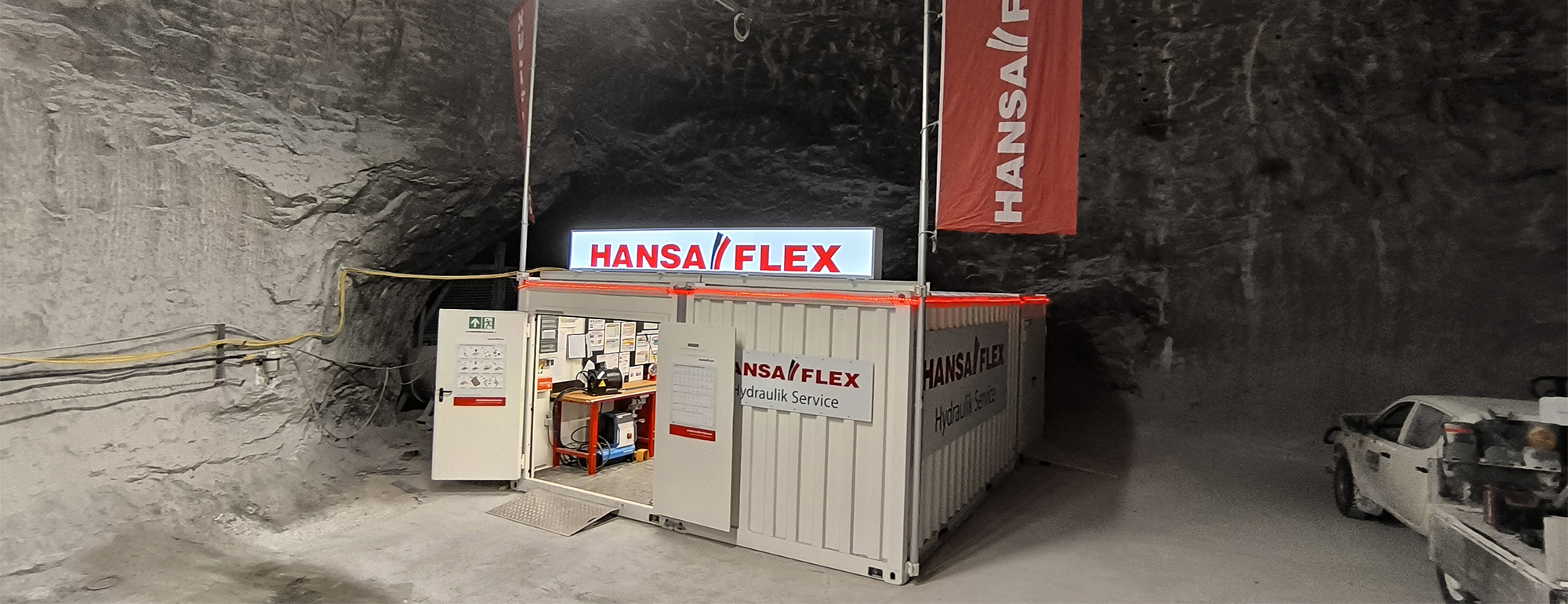1. What actually is the DGUV?
Germany’s Statutory Accident Insurance (DGUV) is the umbrella organisation of the country’s employers' liability insurance associations and accident insurance funds. It ensures health and safety in the workplace. The DGUV issues regulations that companies have to follow. These regulations include state occupational health and safety regulations, accident prevention regulations and technical specifications. In addition to its binding regulations, the DGUV also publishes guidelines to assist with the implementation of these regulations. Furthermore, the DGUV also publishes information on the prevention of occupational accidents.
2. Who is affected by the DGUV?
The DGUV's regulations, rules and information apply to all companies that employ workers in Germany, regardless of the industry.
3. What does the DGUV regulate in the field of hydraulics?
A number of DGUV regulations apply in the field of hydraulics, including DGUV Regulation 113-020 on “Hydraulic Hose Lines and Hydraulic Fluids” and DGUV Information Sheet 209-070 on “‘Safety in Hydraulic Maintenance”. These rules cover the safe use of hose lines and hydraulic fluids, as well as systems and machines. It makes no difference whether the hydraulics is applied in a stationary way in the company or in mobile situations, such as on a construction site. Important: the employer is personally liable for compliance.
4. Why is the DGUV important in the field of hydraulics?
Hydraulic systems work with high pressures and can cause serious injuries or material damage if not used correctly. With its regulations, rules and information, the DGUV helps to minimise the risk of accidents at work and ensure safety in the workplace.
5. What are the most important safety measures?
The most important safety measures include regular inspection of hose lines, following the recommended replacement intervals, training employees in the safe use of hydraulics, and wearing appropriate protective equipment when working on hydraulic systems.
6. How often do hose lines have to be replaced?
The DGUV recommends replacing them every six years. However, this replacement interval only applies to operation under normal conditions. Caution: the six years include not only the period of operation, but also a maximum of two years in storage. In the event of increased requirements, such as multi-shift operation, high pressure impulses or use under demanding environmental conditions, such as on construction sites or in quarries, the replacement interval recommended by the DGUV is reduced to two years. This also applies to hand-held hydraulic tools, such as mobile cutting equipment in scrapyards.
7. How can I keep track of the age of my hose lines?
Both the manufacturer of hydraulic hoses (hose sold by the metre) and the manufacturer of hose lines (hose + fitting) are obliged to provide the relevant information on the product. However, this information is often difficult to read, especially on construction machinery. It is therefore advisable to have a systematic management system for all hydraulic hose lines. This is particularly easy with the HANSA-FLEX X-CODE Manager in the My.HANSA‑FLEX customer portal. Here you can create an individual database with all the relevant information about your hydraulic hose lines with just a few clicks. Each individual hose line can be immediately and unambiguously identified by its X-CODE label. A digital profile containing all the important information for each hose line manufactured by HANSA‑FLEX can be accessed via the X-CODE. Preventive maintenance, including the maintenance plan, is accordingly greatly simplified.
8. Who is actually allowed to replace hose lines?
The DGUV stipulates that only qualified and trained personnel are permitted to work with hydraulic systems. Training has to be refreshed regularly to ensure that employees are always up to date with the latest safety requirements and measures. Training is offered, for example, by the International Hydraulics Academy (IHA).
9. Where can I get support?
As a system partner, HANSA‑FLEX offers you a wide range of services for all aspects of hydraulics. In addition to industry-specific consulting, this also includes hose management. The company’s experts, who are authorised to carry out inspections, will perform all the prescribed tests on your hydraulic hose lines and document the results in a legally compliant manner. If necessary, hydraulic hose lines will be replaced, so that you are always on the safe side.
10. Where can I find more information about the DGUV regulations?
Further information can be found on the DGUV website, where the DGUV regulations and information relevant to the field of hydraulics can also be downloaded. Alternatively, you can speak to a HANSA‑FLEX customer adviser. One of our almost 200 branches is sure to be located near you.

 Mexico
Mexico


